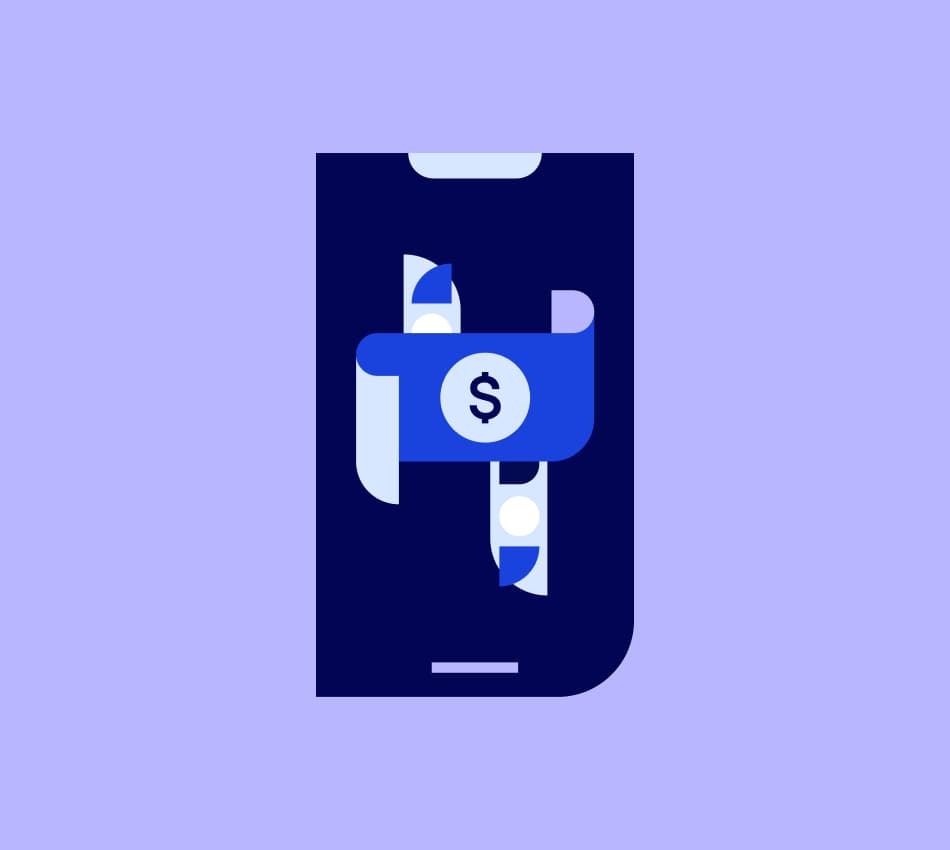In our personal lives, apps like CashApp and Venmo have resolved what once was a hassle—splitting a cost or sharing digital money with friends and relatives. However, some business owners saw in these apps an opportunity to save money on transaction fees and have started using them to receive payments from customers. In some situations, this could be a violation of the app’s terms of service and could lead to tax fraud.
These apps now offer business-specific accounts, but there are many other ways to easily manage your business finances remotely.
What you need to know
-
- There are several categories of digital payment apps. Mobile
payment apps are designed for sending personal payments to
other users.
- There are several categories of digital payment apps. Mobile
-
- Making business transactions on personal accounts violates these apps’ terms of service, and leaves you without FDIC insurance and other
important business banking tools.
- Making business transactions on personal accounts violates these apps’ terms of service, and leaves you without FDIC insurance and other
-
- Mobile payment apps now offer business accounts, but unlike payment processors, they still lack important business banking features and charge non-negotiable fees.
What are the different types of digital payment apps?
Navigating the payment app landscape can be confusing because some categories lack standardized names. Use the table below to see how they differ:
| App type | What you can use it for | FDIC-insured? | Examples |
| Mobile payment app (personal account) | Send payments to another user’s app account for personal purposes | No | CashApp, Venmo |
| Digital payments network | Send payments to another user’s bank account | Yes (transfers between FDIC-insured accounts) | Zelle |
| Payment processor | Receive and manage customer payments | Yes | Elavon, Helcim, Square, Stripe |
| Digital wallet | Make card or bank account payments using your device | Yes (transfers from FDIC-insured accounts) | Apple Pay, Google Wallet, Samsung Pay |
How do mobile payment apps work?
Apps like Venmo or CashApp allow you to send and receive payments with other users of the same app. You receive payments to your app account balance, and can send payments from your account balance, or from a linked debit card, credit card or bank account. To receive the funds to your checking account, you need to initiate a transfer from your app account—this is true for both personal and business accounts.
Why do some businesses use mobile apps to receive payments?
Peer-to-peer payment apps were created to facilitate payments between individuals—such as when splitting rent, a restaurant bill, or a gift. However, some small business owners have used their personal accounts on these apps to receive payments from customers, which is a violation of these apps’ terms of service and can easily become a violation of federal tax laws.
There are two main reasons business owners ignore these risks:
- Setting up a personal account on a payment app is very easy, with no application or even approval necessary to begin receiving payments. (Accounts can operate in a pre-approval state.)
- Personal accounts on these apps usually don’t have transaction fees.
What are the risks of using a personal mobile payments account for business?
Mobile payment apps lack important business features
A good business banking account and/or payment processor offer will offer features which personal mobile payments accounts lack, such as:
- Interest earned on balances
- Automated revenue reports
- Accounts payable tools
- Sub-accounts
- FDIC insurance
- Detailed payment records
Any account lacking these features will increase the amount of manual accounting you need to do, making it difficult to scale your business.
Mobile payment apps aren’t FDIC-insured
You should only use FDIC-insured business banking accounts. This way, if your bank or banking provider fails, your money is insured up to $250,000—or more in some cases. If a mobile payment app fails, goes offline, or otherwise loses your money, there’s no guarantee you’ll get it back.
Mobile payment apps limit the ways you can receive money
Venmo and CashApp can only accept transactions from users of the same app, meaning your customers must also have accounts and know how to use them.
Also, unlike payment processors, mobile payment apps don’t offer payment terminals or gateways. Terminals and gateways connect transactions directly to banking institutions, so you have more payment options and can usually accept payments even during a service outage. If you’re using a mobile payment app and there’s an issue either with the app or your customer’s mobile device, you can’t accept their payment.
Mobile payment apps interrupt cash flow
When a customer pays you via mobile payment app, you receive the funds to your account balance and must initiate a transfer to your business checking account. This adds a step to your cash flow process that doesn’t exist with other digital payment apps, merchant services accounts, or business checking accounts, which directly connect bank accounts.
Are business accounts on mobile payment apps safe?
Mobile payment apps also offer dedicated business accounts, which come with some important benefits compared to personal accounts:
- Tax compliance: These accounts report your payments greater than $600 to the IRS, and at the start of the year will send you a 1099-K form.
- Payment flexibility: Some of these accounts can receive payments from different services, providing flexibility.
However, these accounts still lack some basic features common to other business banking accounts, including FDIC insurance. In addition, these accounts may charge non-negotiable transaction fees and/or transfer fees to receive your payments to your business checking account. Compare this to a fee-free payment processor or merchant services account, which allows you to receive your funds without a paid transfer.
See how Bluevine Business Checking can save you time on daily banking.
